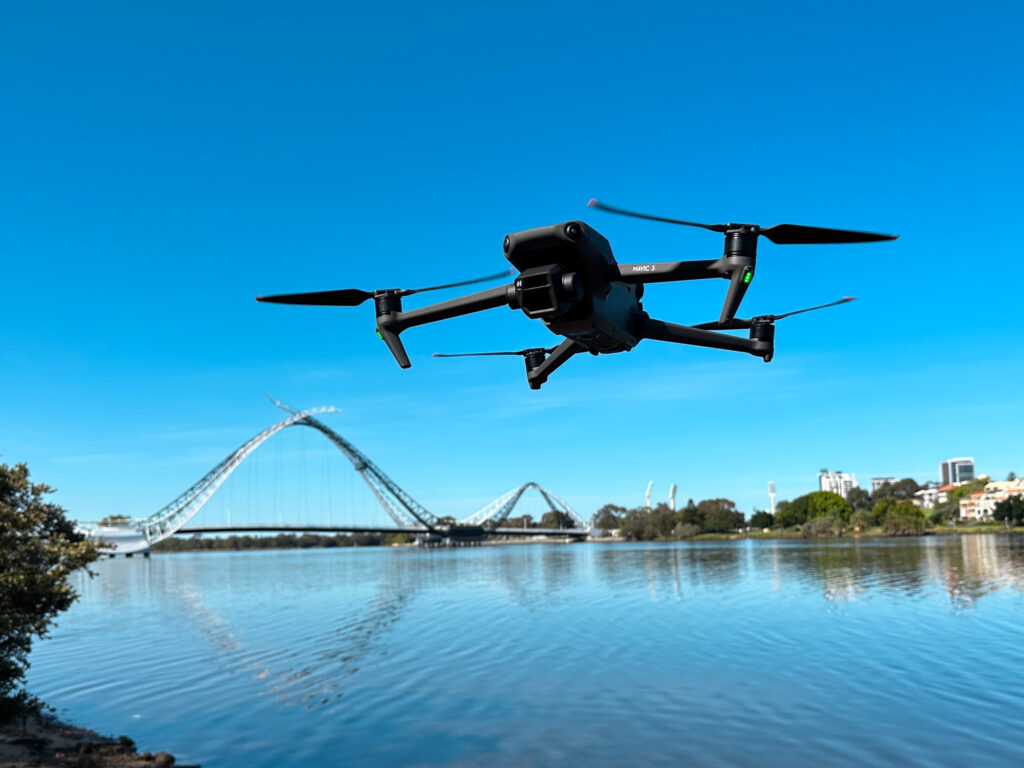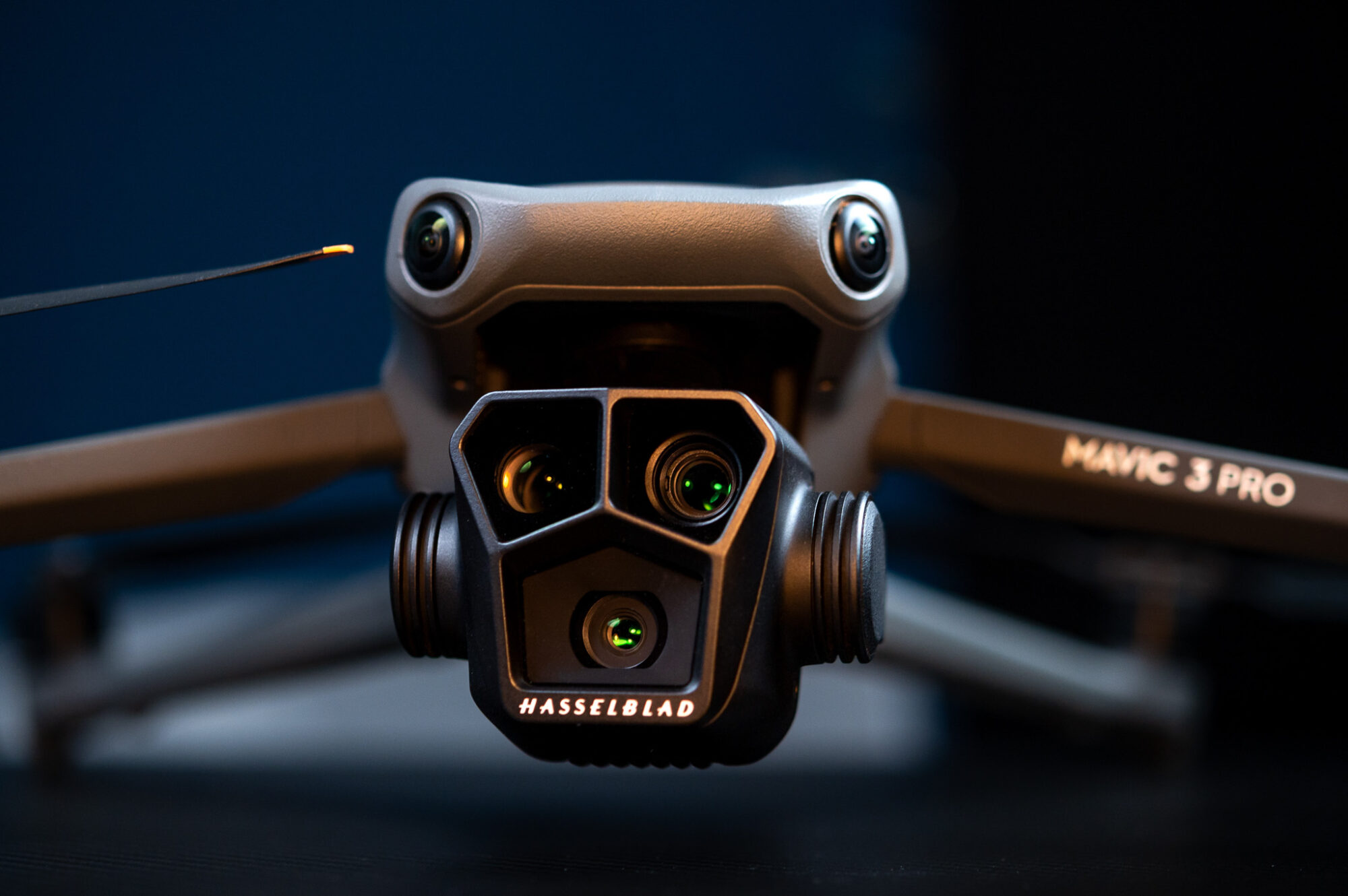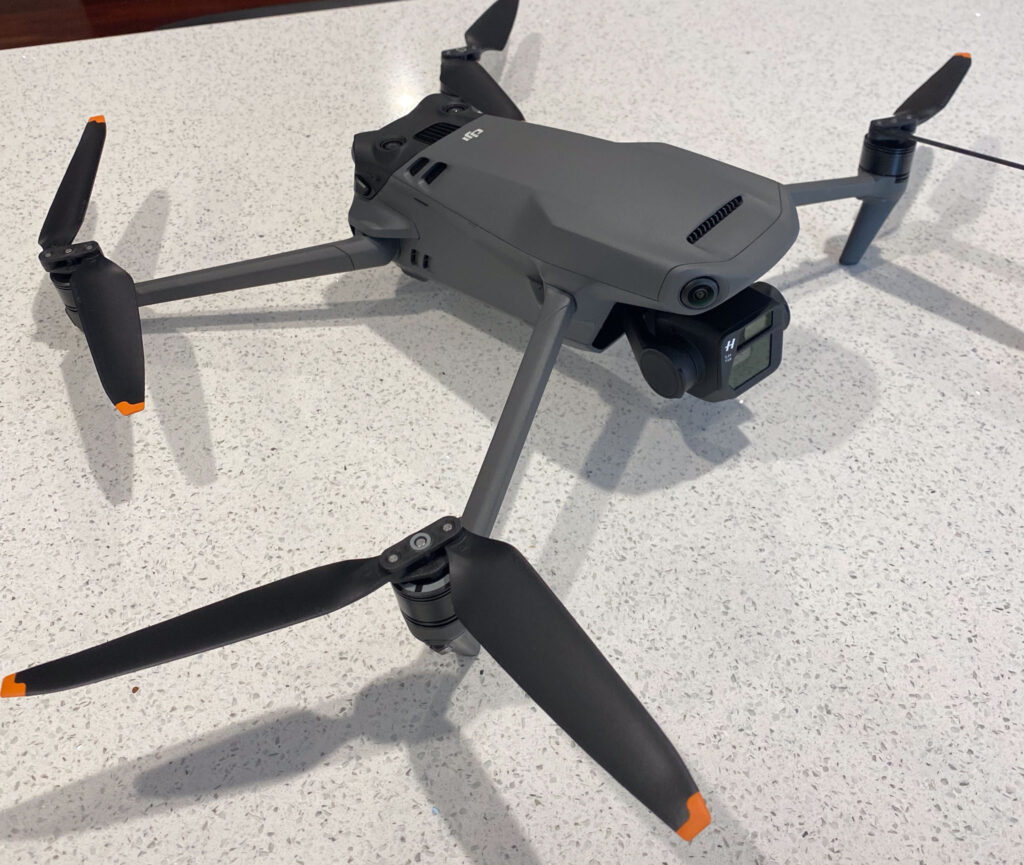Piloting a drone, soaring through the skies and capturing aerial views is a thrilling experience. However, avoiding collisions with obstacles is a challenge that all drone operators face, especially when flying close to objects and buildings.
In this article we will compare the best drones with obstacle avoidance, exploring the functioning of the tech and reviewing the top drone models with superior obstacle avoidance capabilities.
Why should you listen to me? I’ve got over 7 years experience of flying drones using obstacle avoidance. As well as turning off the sensors to fly close to buildings whilst flying drones commercially doing 3D models of buildings.
Best Drones with Obstacle Avoidance
Let’s look at five of the best drones with obstacle avoidance technology for a safer, more controlled flying experience. These drones have been picked based on their performance, technical superiority, and customer reviews.
1. DJI Mavic 3 Pro
When it comes to the pinnacle of obstacle avoidance systems, the DJI Mavic 3 Pro tops the list. With its advanced sensor technology and intelligent flight modes, the DJI Mavic 3 ensures a safe and obstacle-free flying experience.
Key Features
- 45 minute flight time
- 20 metres per second horizontal speed(fast)
- 8GB internal storage (1TB in Cine version)
- Hasselblad Camera: 4/3 CMOS, Effective Pixels: 20 MP
- 5.1K 50fps video
- 4K 120fps
- Omnidirectional binocular vision system, supplemented with an infrared sensor at the bottom of the aircraft
- 32km range
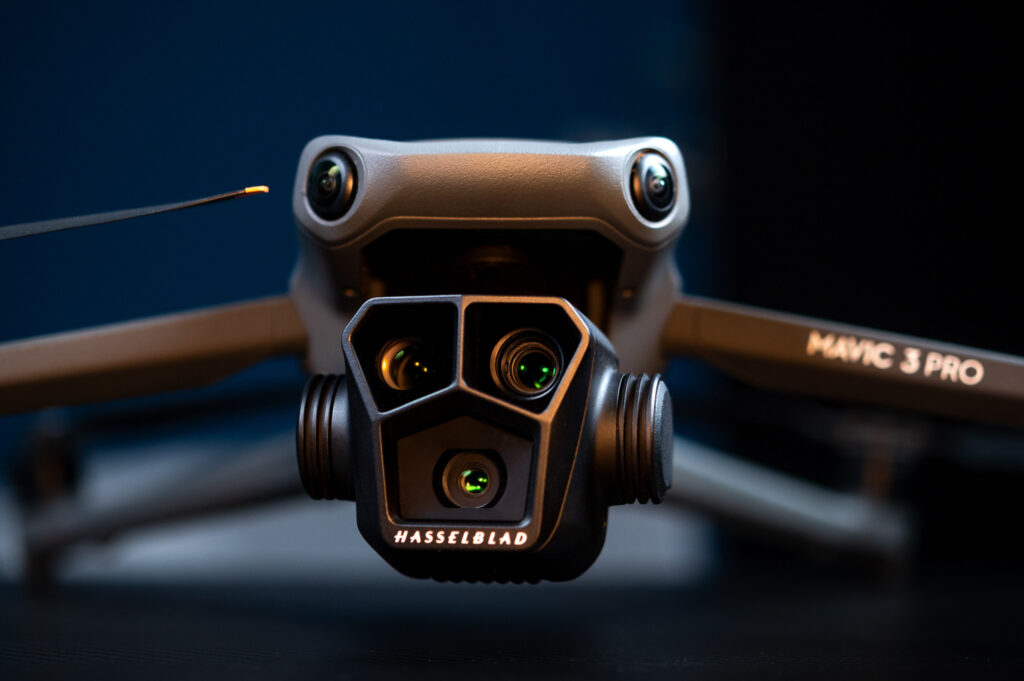
The Mavic 3 is a cheaper alternative to the Mavic 3 Pro and still has high-quality features. It’s equipped with omnidirectional obstacle sensors that provide unrivalled 360-degree coverage, ensuring that this drone can predict and escape potential collisions from all directions.
There are several different DJI Mavic 3 models.
Its Hasselblad 20MP 4/3 CMOS camera delivers breathtaking images and 5.1k videos, capturing every detail with crystal clarity. With up to 46 minutes of flight time on a single charge, you can explore and capture more without worrying about running your battery dry.

2. DJI Mini 4 Pro
Rated as one of the best beginner drones, the DJI Mini 4 Pro comes with omnidirectional sensors, constantly scanning the environment for obstacles and altering its course to avoid collisions.
This small drone takes away the risk of crashes, ensuring that your focus remains on capturing those perfect aerial shots.
Key Features
- Lightweight 249 grams
- 4k 60fps
- Omnidirectional obstacle avoidance
- 45 minute flight time
- 10-bit D log
- 20km (12 miles) range
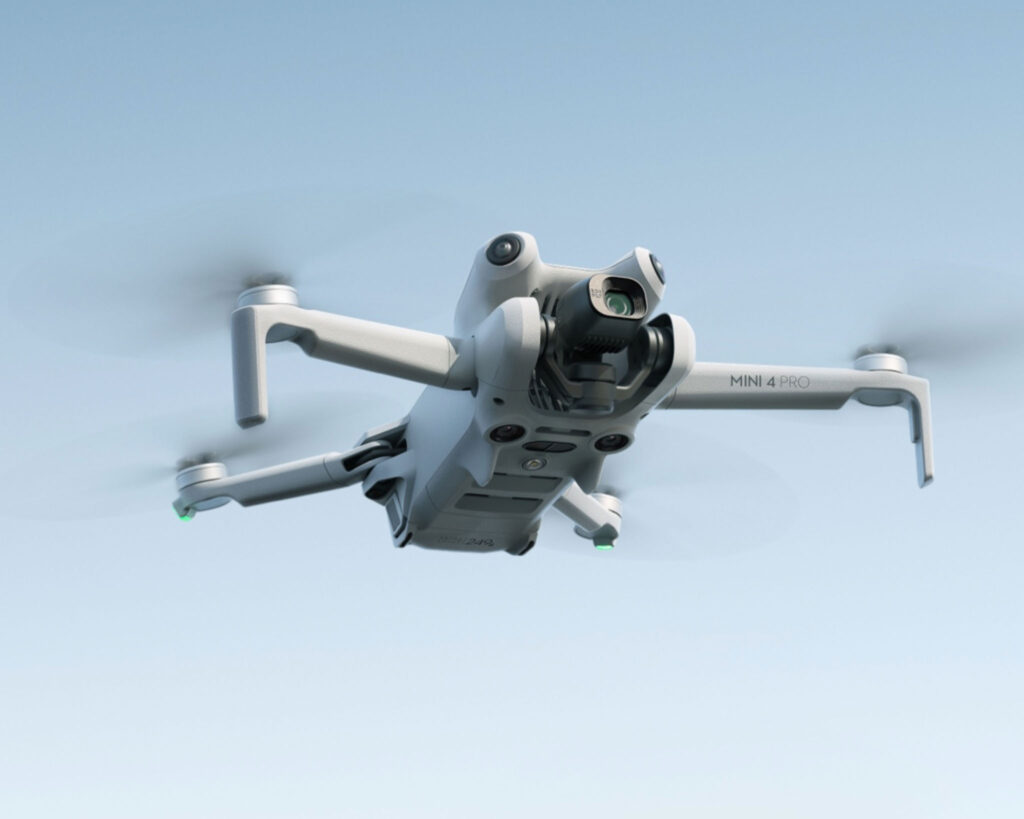
Despite being ultra-portable and lightweight, coming under the 250g mark, the DJI Mini 4 Pro doesn’t compromise on performance and features. With 45 minute flight time and capable of shooting 4k 60fps, the Mini 4 Pro is one of the best drones with obstacle avoidance that won’t break the bank.
3. DJI Air 3
Weighing in at 595 grams the DJI Air 3 is bigger than the Mini-series and smaller than the Mavic series. It’s packed full of great features and is a great beginner drone that’s capable of producing high-quality footage.
Key Features
- 1/1.3″ CMOS Medium Tele & Wide-Angle Dual Primary Cameras
- 45-Min Max Flight Time
- Omnidirectional Obstacle Sensing
- DJI O4 20km HD Video Transmission
- Dual-Camera 48MP Photos
- 4K/60fps HDR Videos
- 32km range
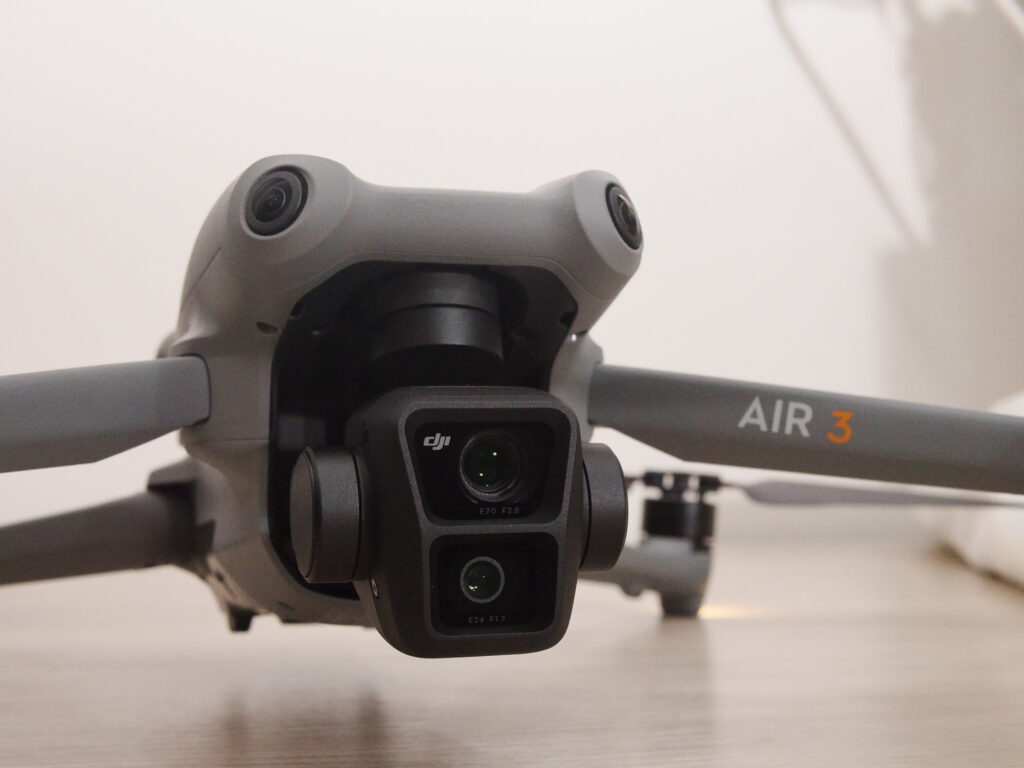
The DJI Air 3 is equipped with APAS 5.0, which allows it to execute more seamless avoidance manoeuvres when it encounters obstacles.
Capable of shooting 4k 60fps HDR videos and a dual camera which shoots a combined 48MP photo, this drone is amazing. It also has an impressive 20km range which works great with the 45 minute flight time. The DJI Air is one of the best long range drones, capable of flying up to 32km.
Tip
When flying your drone, it’s good practice to fly to your furthest point first so that you can save enough battery to return home.
4. DJI Mini 3 Pro
The DJI Mini 3 Pro also boasts a longer battery life and improved camera quality for stunning aerial photography.
Key Features
- Lightweight 249 grams
- Tri-Directional Obstacle Sensing (Forward/Backward/Downward)
- Record Up to 4K/60fps Video
- 46 Minute Flight Time with Intelligent Batteries
- 34 Minute Max Flight with Normal Batteries
- TimeTrue Vertical Shooting
- FocusTrack (ActiveTrack, Spotlight, and Point of Interest)MasterShots
- Timelapse
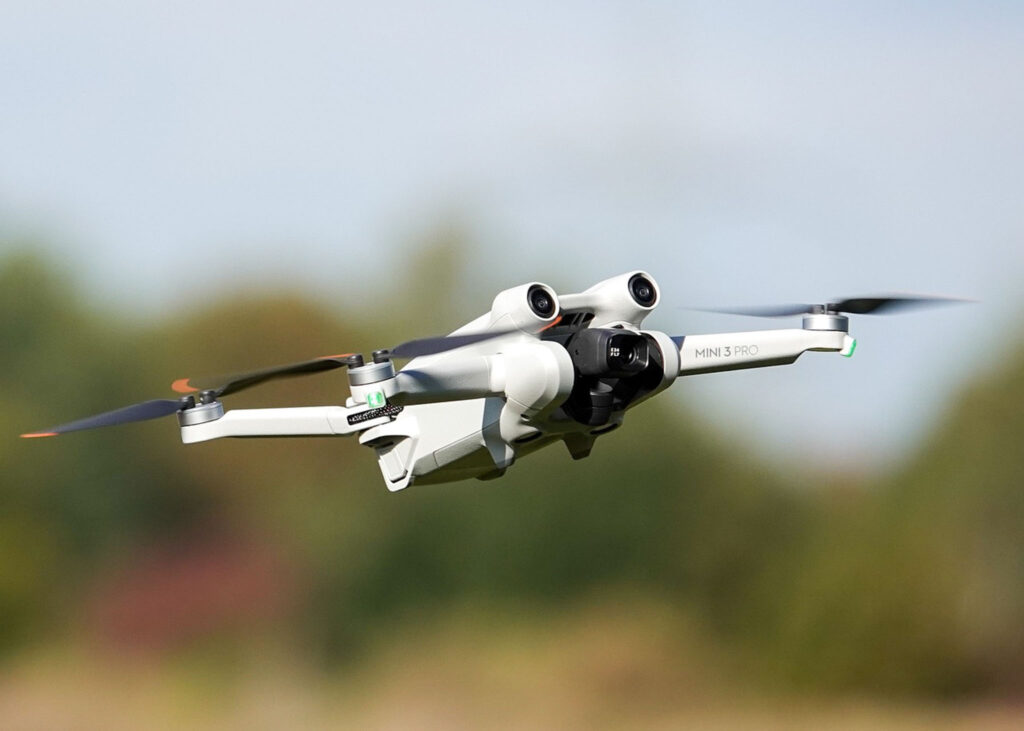
The main difference between the DJI Mini 3 Pro and the Mini 4 Pro is that the Mini 3 Pro only has forward, backward and downward sensors meaning you could ascend the drone and hit a tree, so you will need to be mindful of this.
The Mini 4 Pro also has a greater range and newer flight features. You really may as well pay a little bit extra and get the Mini 4 Pro..
5. DJI Mini 3
The DJI Mini 3 comes in fifth as it only has downward sensors which help you when landing. It also comes with the least amount of features although it’s still capable of taking some high quality footage.
For an extra $200 you can get the Mini 4 Pro which has a heap more features like 360 obstacle sensors and the ability to turn the gimbal to shoot portrait.
Key Features
- Under 249 grams
- 51-minute battery life(intelligent batteries sold separately)
- 38-minute flight (standard batteries)
- 4K 30fps video
- True Vertical Shooting
- 1/1.3 inch CMOS 48MP camera
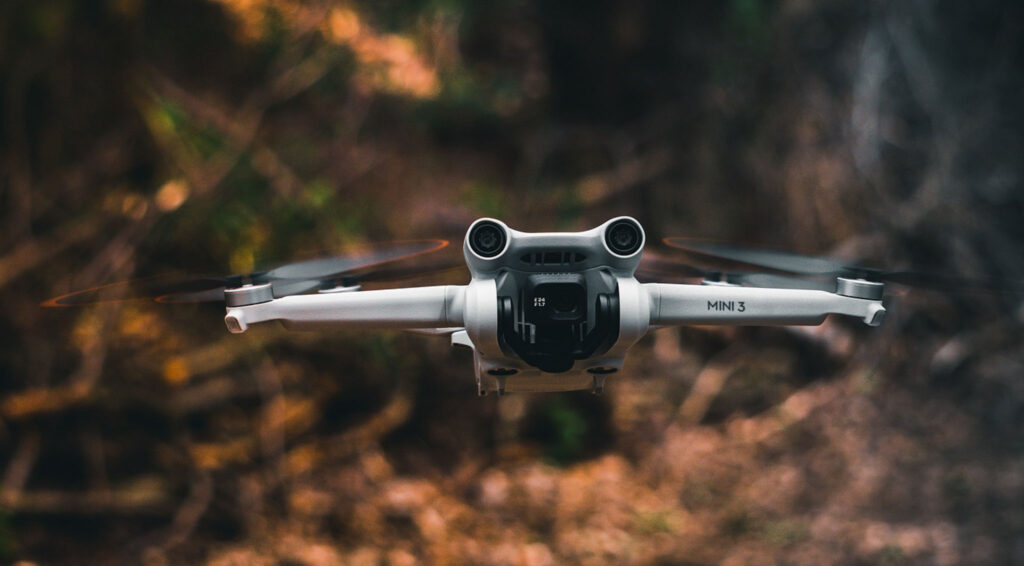
Personally, I like to shoot in 4k 60fps as this creates a smooth video. The 4k 30fps wouldn’t quite cut it for me but for a beginner, it would be great.
It’s a great portable drone that’s capable of flying for 51 minutes(intelligent battery), and capable of shooting in 4k and high-resolution photos with a 48-megapixel camera.
How Obstacle Avoidance Technology Works in Drones
Obstacle avoidance technology in drones utilizes vision sensors, ultrasonic sensors, and sound waves to detect obstacles in the flight path. These sensors gather data to create a 3D map of the surroundings, allowing the drone to navigate safely.
The obstacle avoidance algorithm processes this information in real time, enabling the drone to make quick and precise adjustments to its flight path.
Obstacle Detection Sensors
When it comes to obstacle detection sensors, drones equipped with this technology rely on a combination of vision and ultrasonic sensors to detect and avoid obstacles during flight. These sensors emit sound waves or infrared light to measure distances and create a 3D map of the drone’s surroundings.
The data collected is then used to avoid collisions and navigate through complex environments. With these advanced obstacle avoidance sensors, the drone can safely manoeuvre through open areas or densely populated spaces, making it an excellent choice for aerial photography and professional use.
Tips for Flying Drones with Obstacle Avoidance
When flying drones with obstacle avoidance, consider the flight modes and paths to maximize the technology’s benefits. Understand the various sensors and their role in obstacle sensing. Here are some tips for flying drones:
Pre-flight Preparations
- Ensure obstacle avoidance sensors are activated for safer flights.
- Check the battery life for sufficient flight time.
- Inspect the camera quality to capture stunning aerial shots. (I like to shoot photos in RAW and video in 4K 60fps)
- Update firmware via the DJI Fly app
- Be mindful of tree branches and wires that the collision avoidance sensors can often miss.
- When shooting videos you don’t want the drone to suddenly change direction around an obstacle.
- If you are flying a DJI Mini 3 Pro or older drones then be mindful that your collision avoidance sensors don’t work in all directions.
Using the Intelligent Flight Features
The latest drones are capable of amazing hands free intelligent flight modes and quickshots. Here are a few of my favourites:
Intelligent Flight Modes
- Active track – drawing a square over the subject like yourself or a car and have the drone follow you.
- Point of interest – choose a point, and the aircraft will orbit around the subject.
- Return to home – feeling lazy? click return to home or if you lose signal to your drone then it will automatically return home(amazing right?!).
Quickshots
- Dronie – where the drone will video the subject and circle around them
- Asteroid – The drone will ascend to its highest point and capture a spherical panorama image(mind blowing).
- Circle – similar to point of interest but the drone will circle hands free
Drone Regulations and Obstacle Avoidance
Drone regulations are important to avoid fines and keep yourself and others safe. Understanding the rules of the country you’re in is important. I will break down a few of the rules FAA rules(American) and some of the rules in Australia for flying drones legally.
FAA Rules for Drone Pilots
The rules for flying drones in America are strictly enforced by the Federal Aviation Administration (FAA). Here are a few key points to note:
Drone Rules USA
1. Keep your drone’s altitude below 400 feet above ground level, unless you have proper authorization.
2. Fly within visual line of sight unless authorised otherwise.
3. Give way and don’t interfere with other aircraft.
4. Stay at least 5 kilometres away from airports.
5. Avoid flying in restricted airspace, including stadiums and government buildings.
6. All drones weighing over 0.55 pounds need to be registered with the FAA.
Drone Rules in Australia
When flying drones in Australia, there are specific regulations that must be followed to ensure safe and legal operation.
Drones Rules Australia
1. Fly within visual sight.
2. You don’t have to register your drone in Australia if you plan to fly for fun.
3. You must register your drone if used for commercial purposes.
4. Don’t fly within 5.5km of an airport.
5. Don’t fly above 400 feet(120 metres).
6. Don’t fly within 30 metres of people.
7. Don’t fly at night
Alternate Best Drones with Obstacle Avoidance Technology
When considering alternative drones with obstacle avoidance technology, the Autel Robotics Evo 2 stands out. The Evo Lite boasts omnidirectional obstacle sensing, making it an excellent choice for navigating in complex environments.
On the other hand, the Skydio 2+ utilizes AI and machine learning for top-notch obstacle avoidance, making it a significant upgrade in this sphere.
Autel Robotics EVO 2
Equipped with vision sensors, ultrasonic sensors, and sound waves, it offers omnidirectional obstacle avoidance, making it an excellent choice for navigating through complex environments.
This drone on paper looks incredible but when you compare the footage to DJI drones it doesn’t turn out quite as well. They come with a high price tag too. But still an amazing drone nonetheless.
Key Features
- 6K video
- 40 minute flight time
- 9km range
- 45mph top speed
- Adjustable aperture range of f2.8 to f11
- 360° Obstacle Avoidance
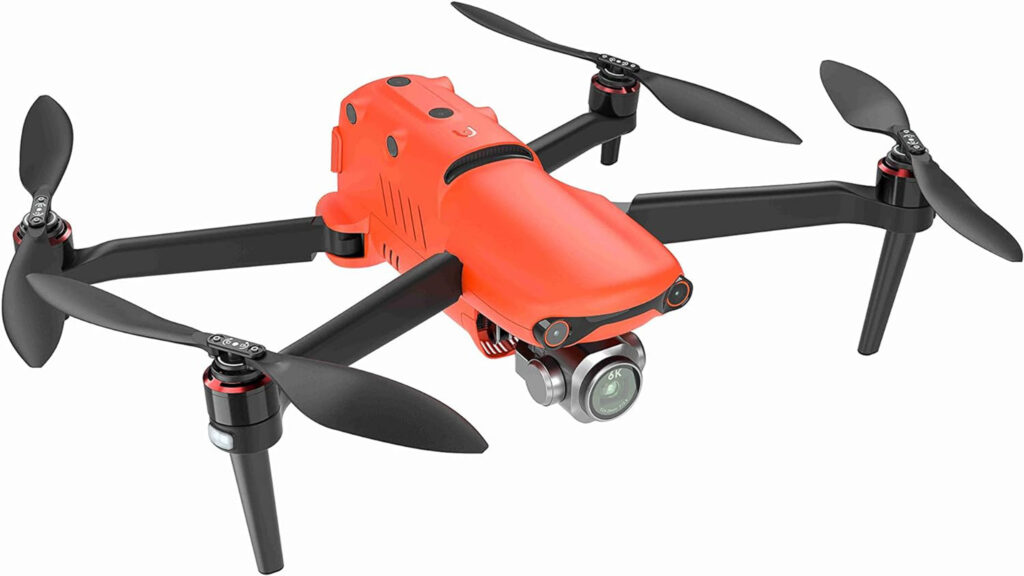
Skydio X10
The Skydio X10 is a standout option when it comes to choosing top drones for obstacle avoidance. The active track and obstacle avoidance in this drone is remarkable at picking up and going around obstacles.
For those seeking a drone to follow them whilst cycling or taking part in any high-speed activities then this is the drone for you. There are currently no suppliers of Skydio drones in Australia. It would have to be shipped from overseas.
Tip
If importing a drone from overseas then check before buying whether it will function at 100% in your country.
Key Features
- 45 minute flight time
- 64mp camera
- Autonomous night flight
- Thermal camera
- Fly within any range where 5G cellular data is available
- Fly remotely from a browser
- Add attachments like parachutes and RTK
- Uses AI technology for obstacle avoidance features
Future Advancements in Obstacle Avoidance Technology in Drones
Advancements in AI and machine learning are expected to enhance obstacle sensing and avoidance capabilities. These technologies will enable drones to navigate more complex environments with omnidirectional obstacle sensing.
Integration with other technologies such as infrared sensors and ultrasonic sensors will further improve the accuracy of obstacle detection. As a result, drones will be able to autonomously avoid collisions in real-time, making them an excellent choice for professional use, aerial photography, and capturing aerial shots in dynamic environments.
AI and Machine Learning
The Skydio team have already incorporated advanced AI technologies that enable drones to analyze and interpret data from various sensors, including vision, ultrasonic, sound waves, and infrared, to make real-time decisions.
It’s just a matter of time that other drone companies like DJI and Autel utilise the integration of AI, so their drones can navigate through complex environments, detect obstacles, and plan optimum flight paths.
Frequently Asked Questions
What’s the best Drone Editing Software?
The best drone editing software on the mobile would be Lightcut which is easy to use and can edit 4K drone footage for free.
The best drone editing software on the computer would be Adobe Lightroom for photos and Adobe Premiere Pro for videos.
Can You Disable Obstacle Avoidance on a Drone if Desired?
Yes, obstacle avoidance on drones can usually be disabled if desired. However, it is important to note that disabling obstacle avoidance increases the risk of collisions and accidents, so it should only be done by experienced drone pilots who are confident in their flying skills.
Tip
Some drones allow for the attachment of propeller guards which are great when flying indoors and with obstacle avoidance turned off.
What Should I Consider When Choosing a Drone with Obstacle Avoidance?
Firstly, you should look for drones that have reliable obstacle detection sensors and advanced algorithms like the DJI Mavic 3, DJI Mini 4 Pro or DJI Air 3. Does it have 360 omnidirectional obstacle avoidance? Additionally, consider the flight stability and safety features of the drone.
What is the Best Drone Alternative to DJI?
What is the best drone alternative to DJI? Two popular options include the Autel Robotics Evo series and the Skydio drones.
These drones boast to be some of the best drones with obstacle avoidance and use sensors and AI algorithms, making them reliable choices for capturing aerial footage while avoiding obstacles. Bear in mind that Skydio drones can be hard to buy depending on which country you are in.
Before buying a drone from overseas, check that it will be able to function properly in your country.
What’s the Best Drone to Buy for the Money?
Look for drones with obstacle avoidance technology, good camera quality, flight time, and durability. Some top options include DJI Mini 4 Pro, DJI Mini 3 Pro and the DJI Mini 3.

Conclusion
The best drones with obstacle avoidance offer a wide range of advanced features, including obstacle detection sensors and state-of-the-art obstacle avoidance algorithms.
Whether it’s the DJI Mini 4 Pro or the DJI Mavic 3, these drones excel in providing longer flight times, exceptional camera quality, and various intelligent flight modes.
As drone regulations evolve and future advancements in obstacle avoidance technology emerge, the market for drones with obstacle avoidance is set to witness significant growth, making them an excellent choice for both recreational and professional use.
